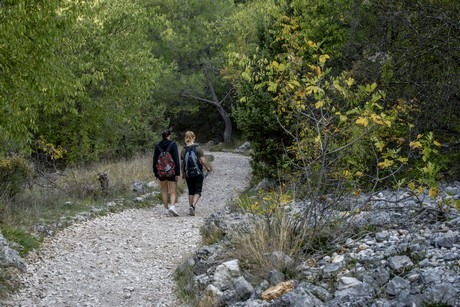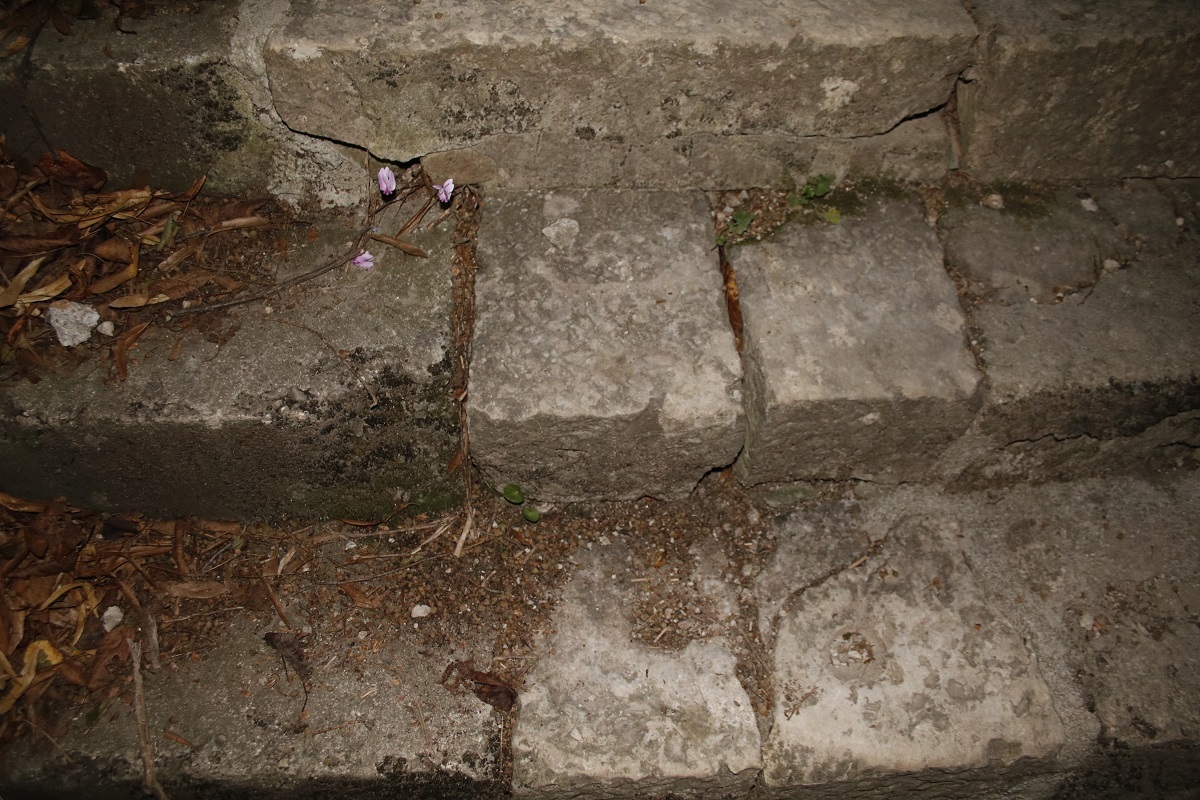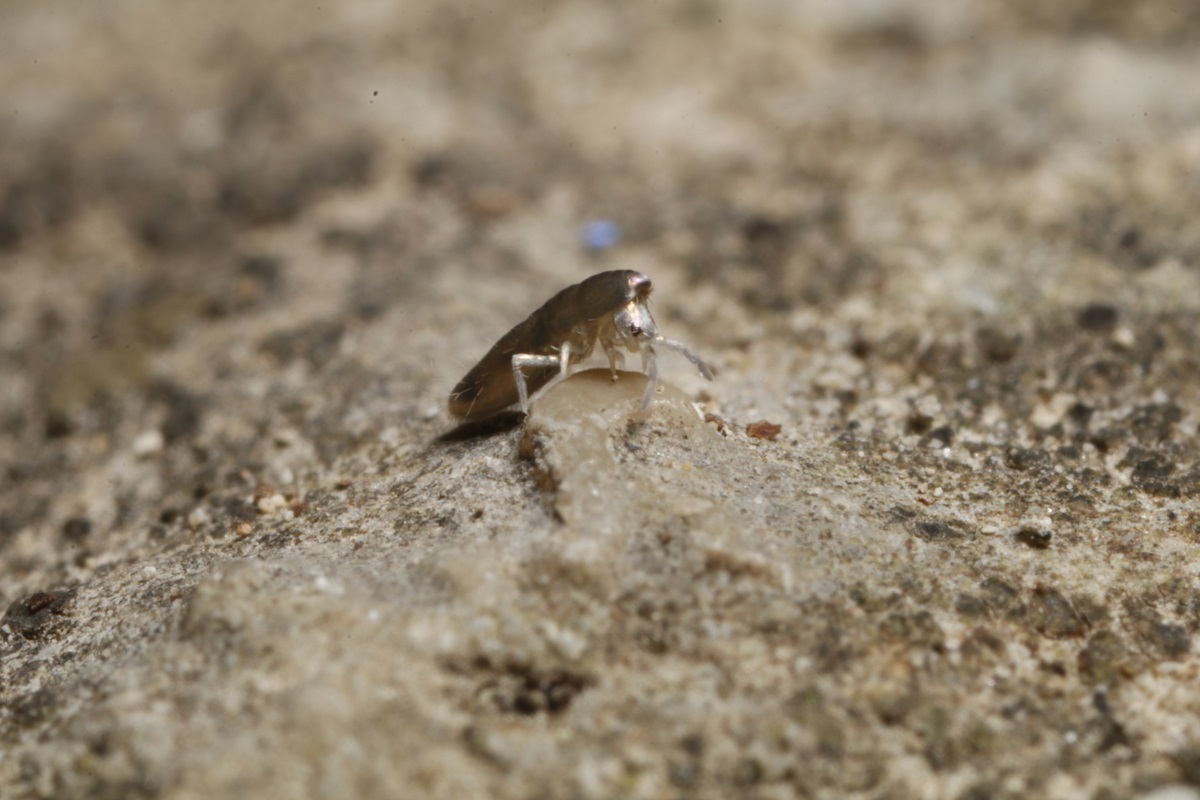Krka National Park Ticket Discount: Walk for a 20% Cheaper Visit in May
April 30, 2021 - Throughout the month of May, a Krka National Park ticket discount is going to be offered in the Park's "Go and Walk" action, which provides a 20% cheaper ticket to any visitor ready to enter and exit the premises on foot.
Krka National Park, as stated on their website, is going to be inviting visitors to enter the Park on foot and get a 20 percent discount on their individual ticket price for doing so. This offer is part of the ''Go and Walk'' action, which starts on Saturday, May the 1st, and is set to continue throughout the whole month.
''The ''Go and Walk'' promotional action implies that people must enter and exit the park on foot in order to get the Krka National Park ticket discount of 20%. All of the park's other services, as well as tickets for visitors who will enter the park by boat or a bus, will be charged by as normal,'' according to Krka National Park's official website.
The discount varies pending on where you intend to go. If you decide to go to the main spectacle of the park, The Skradinski Buk waterfall by taking the hitchhiker trail, either from Lozovac or Skradinski Bridge, the promotional price is 80 kuna. Apart from Skradinski Buk, all other land localities in the park are set to be included in that price. Kids aged 7-18 accompanied by parents or guardians will have to pay only 64 kuna for their ticket, while for kids up to the age of 7, entrance to the park is free of charge.
If you decide to walk only until Roski Slap, an adult ticket will cost 40 kunas and for kids (7-18-year-olds), only 32 kuna.
The third option is also the Krka Monastary and Burnum archaeological site. An adult ticket price for that path is 32 kuna, while the children's ticket costs a mere 24 kuna.
''With the ''Go and Walk'' action, the Public Institute of Krka National Park wants to encourage the active visiting of the park, and the usage of educational-hitchhiking trails too, by reducing the usage of public transport by bus and boats and having a direct impact on lowering CO2 emissions,'' said Nella Slavica of the Public Institute of Krka National Park.

© Krka National Park
Krka National Park is also a holder of the ''Stay Safe in Croatia'' badge, and the park is being very careful in ensuring epidemical measures are respected by both the visitors and employees while informing the public about the benefits of being out in the open air during these challenging times.
Back in the former Yugoslavia, on January the 24th, 1985, the Parliament of the Socialist Republic of Croatia declared Krka a National Park, and it has enjoyed an enormous amount of popularity ever since. This gorgeous park remains a place of natural and cultural heritage, a place to learn, a place to rest, and a place to enjoy a lovely escape from the stress of modern life.
Learn more about Krka National Park on our TC page.
For more about travel in Croatia, follow TCN's dedicated page.
Spellbinding Waltz of Dancing Springtail: New Species Discovered in Krka
December 3, 2020 – New species, the Dancing Springtail has been videoed performing the fascinating and unique dance from which it takes its name. This recent discovery is so far absolutely unique to one quiet corner of Croatia's Krka National Park
It takes all sorts to make the world. In modern-day America, this is more usually said 'It takes all kinds to make the world go round'. But, this famous saying is older than the United States of America. It comes from the Spanish novel, Don Quixote, published in 1605 and written by Miguel de Cervantes - 'de todos ha de haber en el mundo' (literally, 'there must be of all [types] in the world'). Nowhere is this historic phrase more applicable than in biodiversity.
Bugs are often not the prettiest of creatures. We really don't like it when they come into our homes. But, as TCN learned in our recent article on Stinky Martin aka Smrdljivi Martin, every indigenous species has a role to play in our ecosystems. No matter how unsightly, every bug has its rightful place.
The Dancing Springtail, discovered living in a micro-section of Krka National Park, is not beautiful like a butterfly. Its silver body displays no bold colours capable of catching the eye. But, it does have its own mesmerising dance. And, so far, it is absolutely unique, not only to Croatia but to one tiny corner of Krka National Park.
Observed and recorded in video two years ago, the Dancing Springtail has now been classified and given its own name - Lepidocyrtus chorus, the second word pertaining to the curious waltz the Dancing Springtail is seen to do. Thought to relate to its feeding, diet and possibly digestion, the Dancing Springtail makes a circular movement with its abdomen, while keeping its head in one position. It rotates in both directions. This dancing movement is unique to this Croatian sub-species.
The Dancing Springtail was spotted and specimens collected from the old stone steps in the area of HPP Miljacka in Krka National Park. The stairs are usually damp, partially covered by overhead trees and overgrown with lichen and moss. This particular area of the Krka river canyon, around the Miljacka waterfall, is of exceptional importance to Krka National Park, due to the mix of caves and water features which occur there and the biodiversity within the area. For these reasons, this area is off-limits to the public. The Dancing Springtail has, so far, been seen nowhere else in the world.
The body length of the Dancing Springtail, minus the head, is 1.7 mm. The top of the body is covered with silver scales, but upon closer inspection, it has dark purple spots on the sides of its fourth abdominal ring. On its head, between the antennae, there is a purple-colored patch, roughly in the shape of a triangle. The steps near the Miljacka waterfall where the Dancing Springtail was discovered © Krka National Park
The steps near the Miljacka waterfall where the Dancing Springtail was discovered © Krka National Park
The Dancing Springtail is a sub-species of a wider family of hexapods known as Springtails or Collembola (Skokuni, in Croatian). These bugs are no longer classed as insects, because their mouths are internal, rather than exposed. There are about 3,600 different species of Springtails. They have been observed to feed on leaf litter, fungal hyphae, spores, pollen, animal remains, colloidal materials, minerals and bacteria. In doing so, they assist the decomposition process of natural areas. They are reputed to be one of the most abundant of all macroscopic animals, with estimates of 100,000 springtails living in every square metre of ground. Anywhere there is soil, you can dig and surely find them. A Dancing Springtail © Krka National Park
A Dancing Springtail © Krka National Park
Springtails get their name from an appendage they have on their abdomen which is held under constant tension. When released, the appendage allows them to fling themselves high through the air in as little as 18 milliseconds. They use this jump as a defensive mechanism and in order to migrate to fresh feeding grounds. The appendage makes springtails one of the best jumpers on the planet.
Springtails possess the ability to reduce their body size by as much as 30% in response to rising temperatures in their environment. Warmer conditions increase their metabolic rates and so the decreasing of their size helps them survive. Springtails are good bio-indicators of soil quality and are currently used in laboratory tests for the early detection of soil pollution. Rumours persist that the United States investigated weaponising springtails for use in biological warfare, indeed that they were used for such a purpose in the Korean War. No widely-accepted proof of this usage exists.
Via the study of fossils, we know that springtails have been on the planet for at least 400 million years. If the Dancing Springtail of Krka National Park has been around for that long, its unique movement is probably the longest-running dance in the world.
New Suspension Bridge at Krka National Park to Connect Two Medieval Fortresses
A new attraction is coming to Krka National Park - a pedestrian suspension bridge will connect the medieval fortresses Nečven and Trošenj!


